Sachertorte or Sacher Torte is widely well known brand and symbol of Austria and in particular its capital Vienna. Now, although both terms used for this famous traditional pastry might at first appear to indicate the same thing, they are not. It is an interesting historical fact that the title “Sacher Torte” means the certified cake, and is made and sold only by Sacher Hotel’s bakery. The other term “Sachertorte” in fact indicates just a cake that is made in a Sacher style.
This important distinction was the outcome of a 7 year long court battle for the right to the original recipe, between two families; Demel and Sacher. The Sacher won and got the exclusive rights to the phrase “The Original Sacher Torte”, allowing them to place an official chocolate seal on each cake.
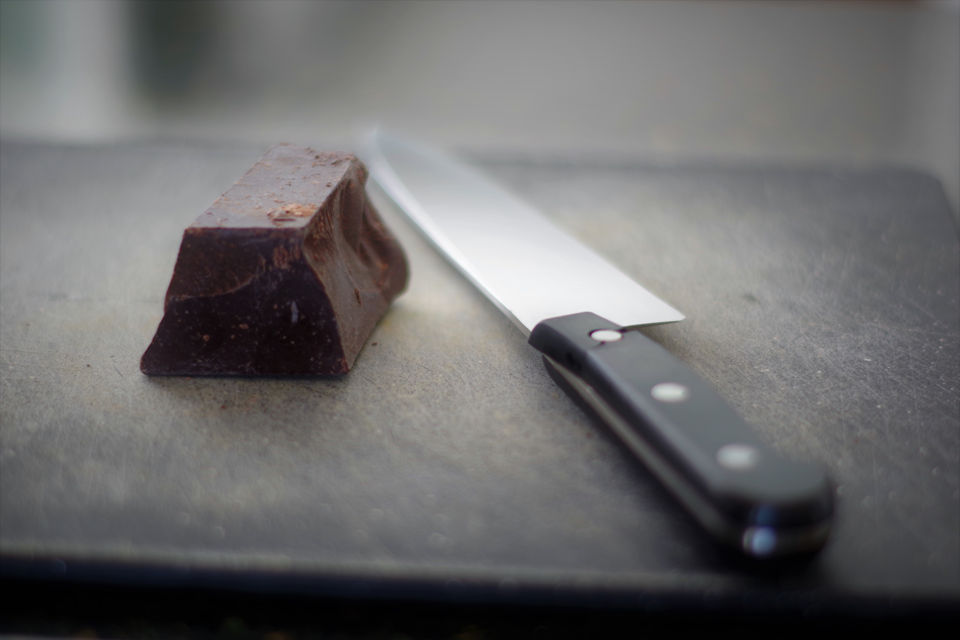
Who was Sacher? The story goes that in 1832 Franz Sacher was a young 16 year old kitchen’s apprentice working for Klemens, Prince von Metterich. The prince tasked his personal chef to crate a new cake for an incoming party. The prince wanted to make a surprise and chef was instructed to make a cake featuring stark contrasts to a popular cakes of the time that were light, fluffy and creamy.
The guests were to be served with a novel, dryer, more compact cake, giving it more of a “masculine” line.
As things usually turn out to be in all good life stories, young Franz Sacher found himself “in the right place at the right time”. The chef fell ill and Franz inadvertently took over, in the master’s absence.
The recipe was a sensation which consequently propelled Franz’s carrier to a Hungarian court of Prince Paul III Anton Esterházy. It is there in Budapest that Sacher Torte had its biggest impact and became well known.
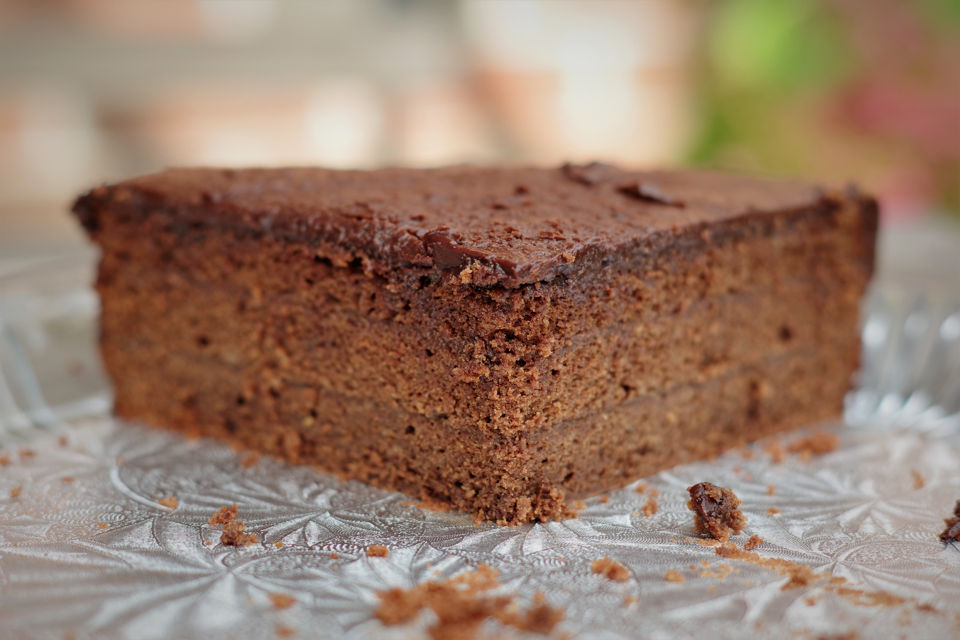
Franz returned to Vienna and took a high position at what later became Demel, the royal bakery to the emperor. He continued using his recipe and Sacher Torte was very popular and a big seller. At some point Franz Sacher moved on and opened his own fancy grocery store. His son Eduard followed his father’s footsteps in the food business and got his training in Paris and London. Upon his return to Vienna and immediate success with his first restaurant, Eduard moved his operation to a new location. It was a premium location behind the new opera house where he established a full scale hotel.
Interestingly, with its established high level of elegance this became one of the most famous hotels in the world at the time. Even waltzes, movies and operettas have been written about it.
After World War II the Austrian economy was in disarray and anything with brand identification to a product was promising better chances to a struggling business in the market place. This is the time that Sacher family sued Demel, former employer of their patriarch Franz Sacher, over which establishment had the right to call its cake “original”. It was Sacher that won and the rest is history.
This recipe is for the Leschanz Sacher torte and as you learned from the above brief history it would qualify as “a cake that is made in a Sacher style”. However, don’t let it confuse you and make you feel of a lesser quality. The cake is absolutely amazing and few friends of ours that we served this cake with commented that it was better than the original Sacher they had in Vienna! That was flattering but I would consider it just an expression of a personal preference.
The recipe originates from Walter Leschanz who baked for both, Demel and Sacher. This recipe produces tall, three layered cake, as oppose to Demel’s one and Sacher’s two layers. This allows for more glaze and consequently with a more moist cake.
It is a fine cake worthy of a special occasion. I made it several times and every time was a major hit.
Serve cake with a large dollop of whipped cream on the side. I stored the torte in an airtight container at room temperature.
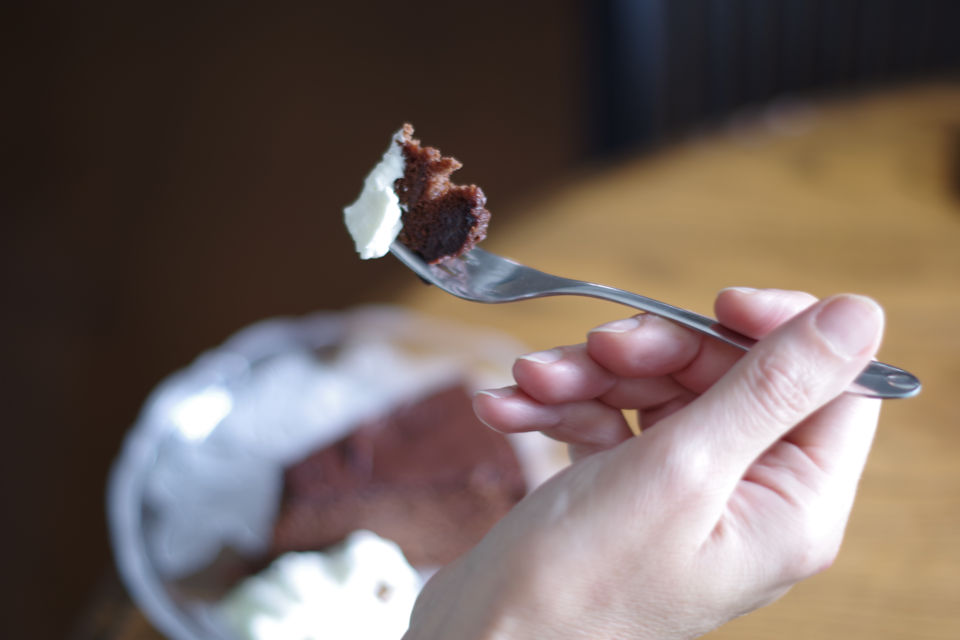
The recipe is adapted from ” Kaffeehaus – Exquisite Desserts from the Classic Cafes of Vienna, Budapest and Prague“.
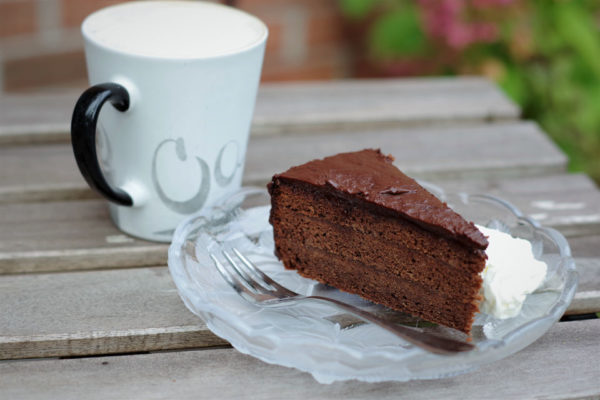
| Prep Time | 30 minutes |
| Cook Time | 45 minutes |
| Servings |
servings
|
- 165 g bittersweet chocolate finely chopped
- 170 g unsalted butter at room temperature
- 7 large eggs separated, at room temperature
- 1 cup granulated sugar
- 2 tbsp granulated sugar
- 1 cup all purpose non bleached flour sifted
- 1 tbsp all purpose non bleached flour sifted
- 1/4 tsp cream of tartar
- 1 1/4 cup apricot preserves
- 2 tbsp golden rum or water
- 1 cup granulated sugar
- 1/2 cup water
- 120 g bittersweet chocolate
- 1 cup heavy cream 35% MF
- 2 tbsp confectioner's sugar
- 1/2 tsp pure vanilla extract
- 1 cardboard round 216 mm (8 1/2") diameter
Ingredients
Biscuit
Apricot Glaze
Chocolate Glaze
Whipped Cream - for serving
Assembly
|

|
- Position the rack in the center of the oven and preheat to 205°C (400°F).
- Lightly butter a 230 mm (9") spring-form pan and line the bottom with round of parchment paper. Dust the sides with flour and tap out the excess.
- Sift the flour three times over a piece of parchment paper. You will sift it once again later when adding it to the mix.
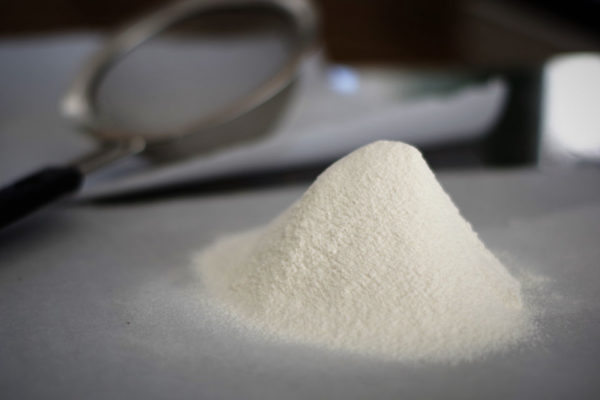
- Melt finely chopped chocolate over a double boiler to approximately 46 °C (115 °F), until melted and smooth. The water in lower part of the boiler is first to be brought to boil and before top part with chocolate is put over it the heat should be set to low.
- In a large mixing bowl, bit the softened butter on high speed until smooth, about 1 minute.
- Add the chocolate and mix in at low speed for another minute.
- At high speed beat in the egg yolks, one at a time.
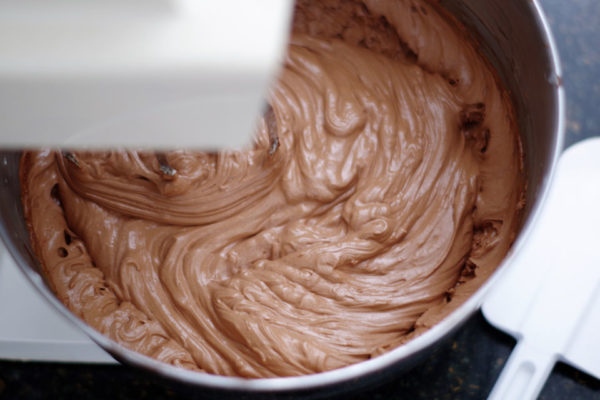
- Using clean beaters, beat the egg whites, cream of tartar and sugar at high speed until soft and shiny peaks are formed. Do not overbeat!
- Using a large spatula stir into the buttery mixture 1/4 of the beaten egg whites. Make sure the mixture is well lightened up and then fold in the remaining whites. Fold until only few traces of egg whites are left.
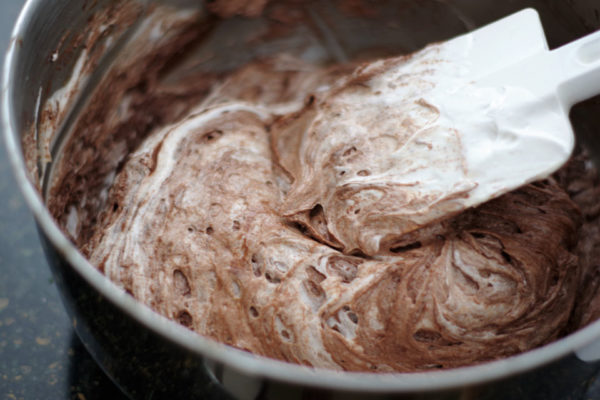
- Sift in flour in two additions, fold in gently and be careful not to deflate the mix.
- Spread batter evenly in the cake pan. Bake until a toothpick comes out clean, about 45 minutes.
- Cool on a wire rack for 10 minutes. Remove the side ring of the pan, invert the cake onto the rack. Remove the parchment paper and reinvert to the rack, turn the right side up. Let cool completely.
- Using a serrated knife trim the top of the cake to make it level. Cut the cake horizontally into three equally thick layers. Place the first layer onto 216 mm (8 1/2" ) cardboard round.
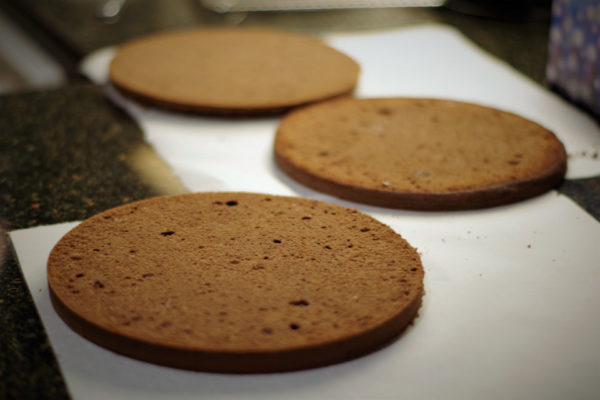
- Add the apricot preserve and rum in a small saucepan. Bring it to a boil over medium heat, stirring constantly. Continue cooking for another 3-4 minutes until glaze is very sticky. Strain the glaze through a wire sieve into a small bowl pressing hard on solids using the back of the spoon.
- Brush the biscuit layer with the warm apricot glaze.
- Top with the second biscuit layer and brush with the glaze.
- Repeat the same with the third biscuit layer brushing top and sides of the cake with the remaining glaze. Let cool until the glaze is set.
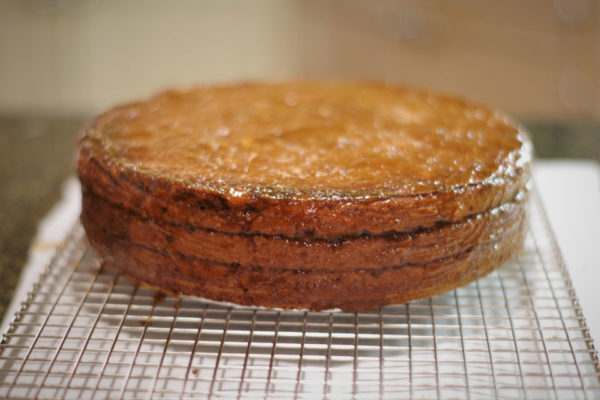
- Transfer the cake to a wire rack placed over a baking pan lined with the parchment paper.
- In another small saucepan, over high heat, bring sugar, water and chocolate to a boil, stirring occasionally. Reduce the heat to medium and cook stirring constantly until glaze thickens up and reaches 112°C (234°F), approximately 10 minutes. Keep an eye on a temperature and do not let it go over set 112°C (234°F) or it will turn into a candy!
- Remove from the heat, stir to cool and thicken lightly, about 1-2 minutes.
- Pour the warm chocolate glaze over the cake, allowing it to run down the sides, Using an offset metal spatula make sure the cake is coated completely.
- Cool until the glaze is barely set, transfer to the serving plate. Let cool completely.
- To serve, slice with sharp knife dipped into hot water.
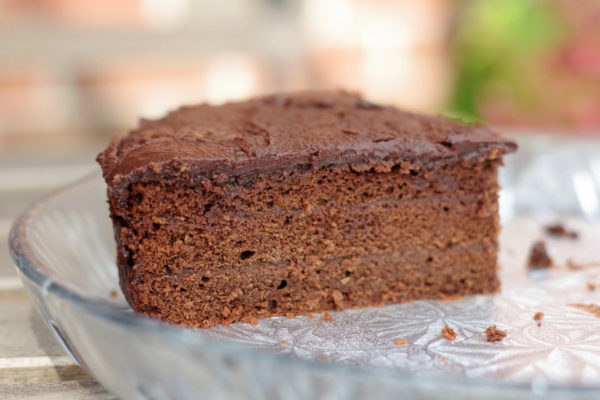

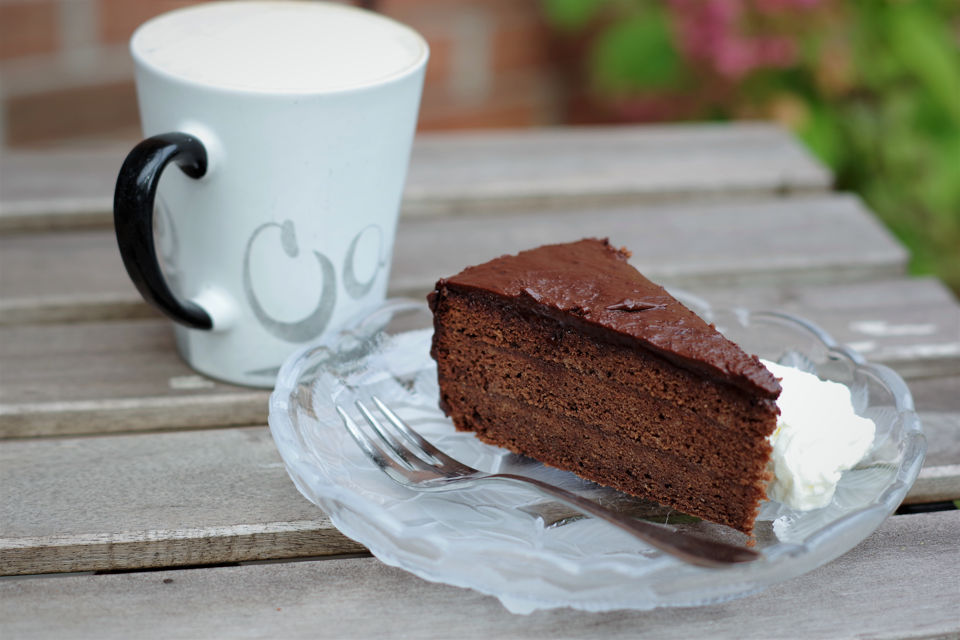
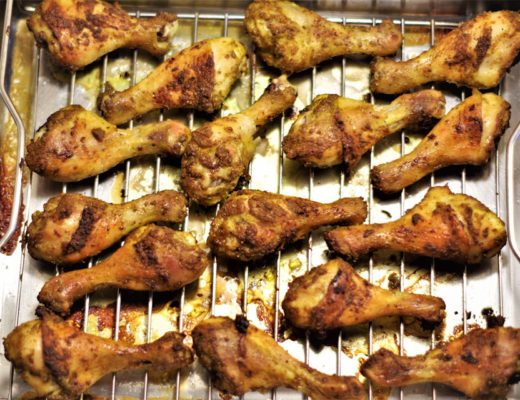
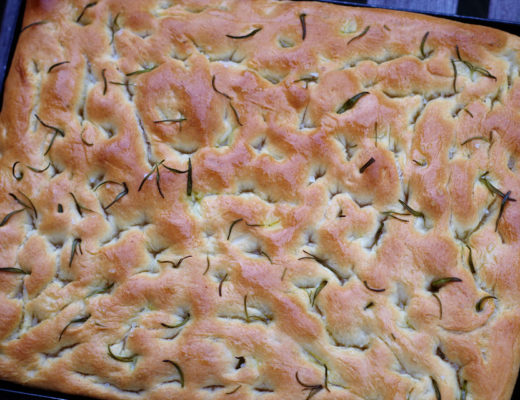
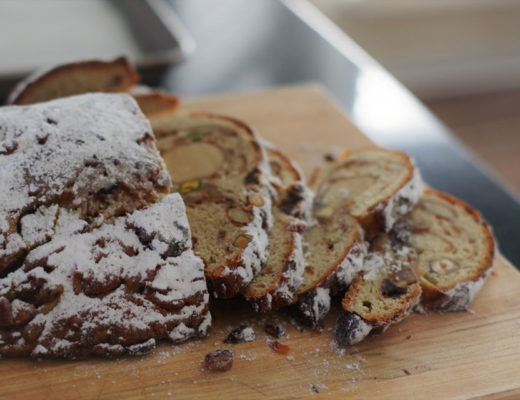
No Comments